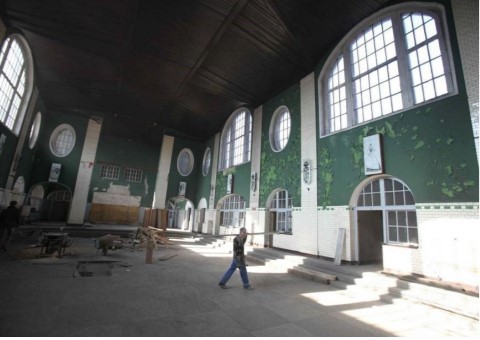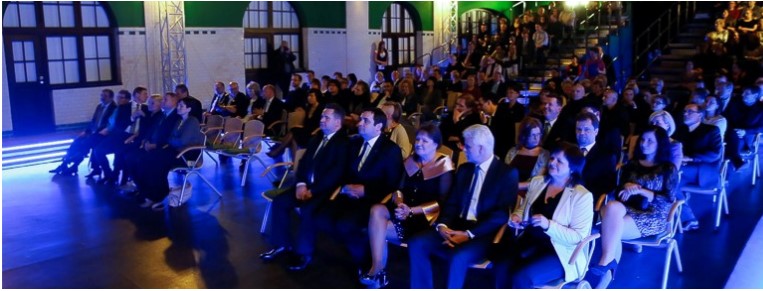Description
The Rozbark mine is one of the best examples of industrial revitalisation in post mining areas.
The Rozbark coal mine was located in Upper Silesia. It was established in 1870 and was in operation until 2004. On 31st January in 1923 the big catastrophe happened in the history of mining in Bytom where 145 miners lost their lives. In 2007 Rozbark mine officially entered Polish registry of monuments. In 2011 is has been granted EU funding partially covering the revitalisation costs.
Extracted materials
bituminous coal
Anthropological information
The new life has sprung in the Rozbark mine after its closure in 2004. Dance Theatre and leisure centre have been established within old infrastructure. The building complex of the main area of the former Rozbark mine was entered in the register of monuments in 2007. The set of monuments includes: the building of the former guild hall, the boiler room, the building of the engine room of the Bończyk shaft the retaining wall and their immediate surroundings.

Sociological information
First attempts to dig the shaft in the later Rozbark mine occurred in 1828 perhaps by residents. Finally, on 23 June 1855 Hugo I Henckel von Donnersmarck reported the purchase of the Rossberg mining field to the Mining Authority of Wrocław.
More modernizations and facilitating the extraction of coal were used in the mine. Some of them did not bring a profit to the mine as the value of coal was getting weaker. In 1923 there was a massive disaster in the Rozbark mine, the biggest in history of mining in Poland, 145 miners died, and hundreds were wounded.
From 1945 in “Barbara” Shaft there was a forced labour camp for prisoners, internees, and prisoners of war. Over 1200 people were staying there. In 1949 the camp was closed.
Archaeological information
The area of the mine before the merger with the Łagiewniki Coal Mine was 7.69 km2, the production fields had an area of 5.1 km2. In 2004 on its closure the mine was about 600 metres deep. Despite reaching the rich seams, the mine found itself in a difficult situation. Due to its fire causing large losses as well as underinvestment, the mine was preventing highly profitable mining operations. Nowadays, all the buildings have found their use. There is a Dance theatre, school workshops area, leisure centre, outdoor gym and outdoor area with benches.
Creativity insights/curiosities
The true reason for closing the Rozbark mine were not political reasons but a ghost of a “black tramp” who in 1936 came to work in a mine pretending to be a man. After few months, some miners noticed she was a lady and cruelly raped her and killed in the mine. The body was never found. Since then, horrible things happened to the perpetrators. They were killed in strange circumstances. Sometimes the miners were coming back from the mine with a scream on their lips and madness in their eyes. People believe that her spirit is still there and she didn’t let the miners work in peace.

Sustainable tourism insights
The mine compex is not a community centre, where the movement was preserved but in a form of dance. Dance theatre and dance school are running in the building and the space is actively used by the citizens.
Environment sustainability
The history of Rozbark changed from the industrial town to art run by people and creativity.








